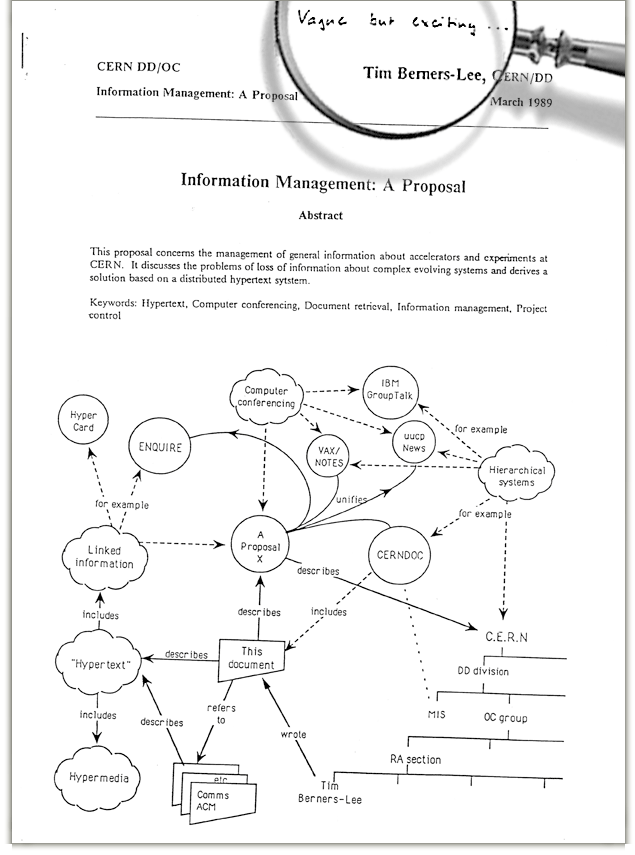The Internet and the Web
The Internet and the Web are not the same.
The Web is an application of the Internet composed of a series of protocols, languages and applications, such as HTTP, HTML, CSS, Javascript and the web browser.
Web History and Structure
In 1989, Tim Berners-Lee proposed the WorldWideWeb as a means of organizing the documentation of the Large Hadron Collider (LHC) at CERN.
It consisted of a browser/editor client that could render and edit the Hypertext Markup Language (HTML)
and a server that would store the HTML files and send them to anyone on the internet with a browser/editor client who requested them using the Hypertext Transfer Protocol (HTTP).
Client-Server Model
Berners-Lee's WorldWideWeb uses a client-server model that connects client to server using the Hypertext Transfer Protocol (HTTP).
A client web browser makes a request for a set of documents using a Uniform Resource Locator (URL).
The Domain Name System (DNS) collectively converts the URL into the unique Internet Prototcol (IP) address of the computer assigned to the URL and requests the desired resource.
The requested resource (eg. /dir/file.html) is then retrieved by the server and sent back into the internet as a response.
Once received, the web browser parses the file, perhaps requests additional resources (like images), and then renders out the files for the user once it has the files it needs.














